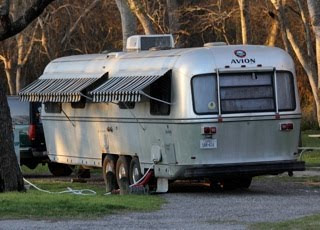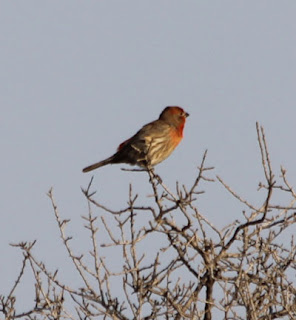
As Big Bend State Park visitors know, it’s about 70 miles of desolation from Marathon down to the park headquarters, and then another 20 miles of desert to the Rio Grande Village campground. But what amazing vistas as you head south — just breathtaking. Photos don’t do the landscape justice. Geological features – incredible formations – give a real sense of the millions of years of history that precedes us.
Yesterday’s high was 96 degrees and we arrived, hot and dusty, and set up. There’s no air conditioning (no power or water) but we were doing fine — until I learned that I had set up on a site already reserved by someone else. So, it was stow things, hitch up once again, and move about 100 yards up the road to another site. I wasn’t a happy camper and Mary was overheated from the heat and dryness. Great start — Big Bend.
Once things cooled down, it was a lovely evening. It went down to 44 this morning and we ran the heater for a bit while having morning coffee. I found out that the little store here has WiFi (you can forget AT&T coverage for cell phones) so we could get email and post stuff. Still, with no electricity, battery usage for the computers needs to be monitored as well.
I took a little hike this morning on a short trail and saw a few birds, the Rio Grande, some cool rock formations, the Rio Grande, and Mexico. Above is an early morning shot of the campground and the scenery.
They warned us about wildlife here — particularly coyotes. Well, as we were leaving this morning to do some sightseeing in the truck, what should wander right in front of us, in the middle of the campground, by Mr. (or Ms.) Coyote. Took the picture through the windshield.

We drove up to the Chisos Basin which is just about impossible to describe. It’s high elevation for down here and has some spectacular mountains and vistas. I’ll get some shots next visit — we just took a “I’ve Been There” shot at the visitor center.
We have hung out reading this afternoon underneath the trailer’s awning. It’s about 88 degrees but there’s a nice breeze. I had Penny’s leash anchored by my chair leg. I left to fix a couple of seltzer drinks and from inside the trailer heard a bark, a yell from Mary, and a upsetting of the lawn chair. Mr. Coyote (or a sibling) had just crossed our road about 25 feet away and Penny was in attack mode. Fortunately, the leash got caught — or she got smart — and I grabbed her and all was well again — once Mary’s heart rate settled down.
This is a tough place from noon to five or so — you can see why siestas so popular in the Southwest. After May, things essentially close down here due to the extreme temperatures. However, we saw scenery today that just blows you away. Now, to keep the coyotes, mountain lions, and javelinas where they belong.
P.S. On guidebook we have, in talking how park animals have gotten too used to human foods, said that the crinkling of a potato chip bag opening can draw javelinas. I knew junk food was not good for you.
 At the Sabine NWR, as I stepped on the observation platform and raised my binoculars to look up the channel for birds, this guy, almost at my feet, nearly stopped my heart. He just laid there on the bank — but he was big — and likely pretty quick. Penny was in the truck and will be on leash until we get back into less hostile territory.
At the Sabine NWR, as I stepped on the observation platform and raised my binoculars to look up the channel for birds, this guy, almost at my feet, nearly stopped my heart. He just laid there on the bank — but he was big — and likely pretty quick. Penny was in the truck and will be on leash until we get back into less hostile territory.














